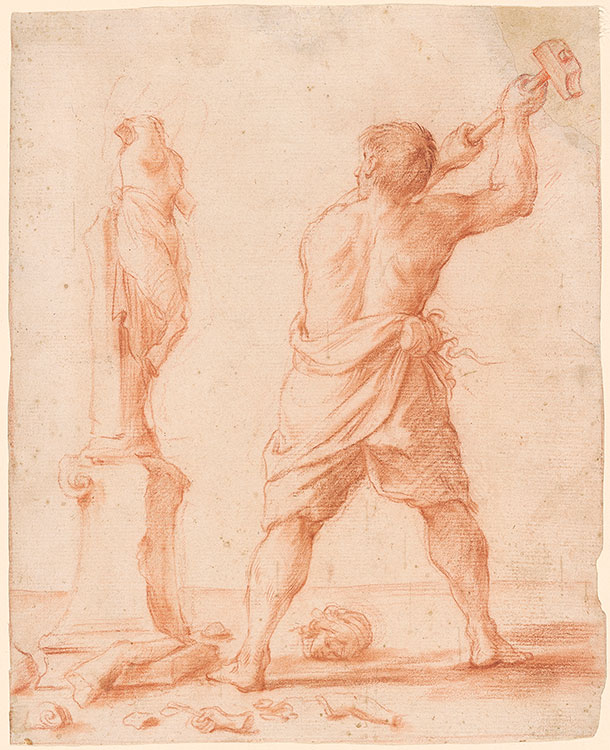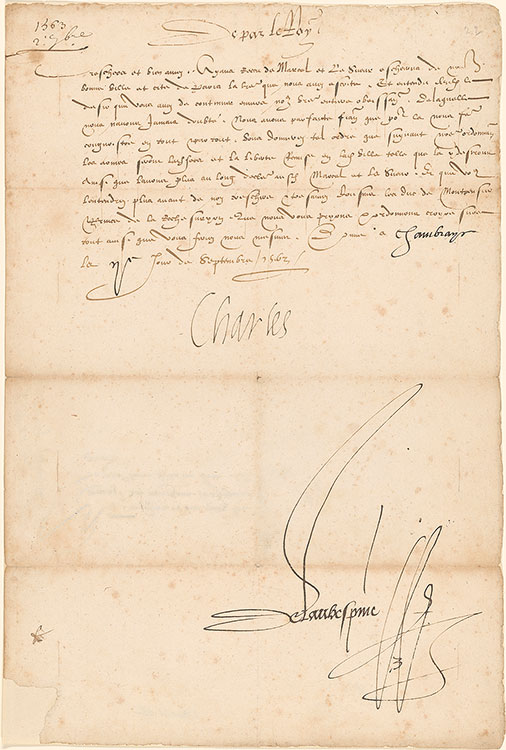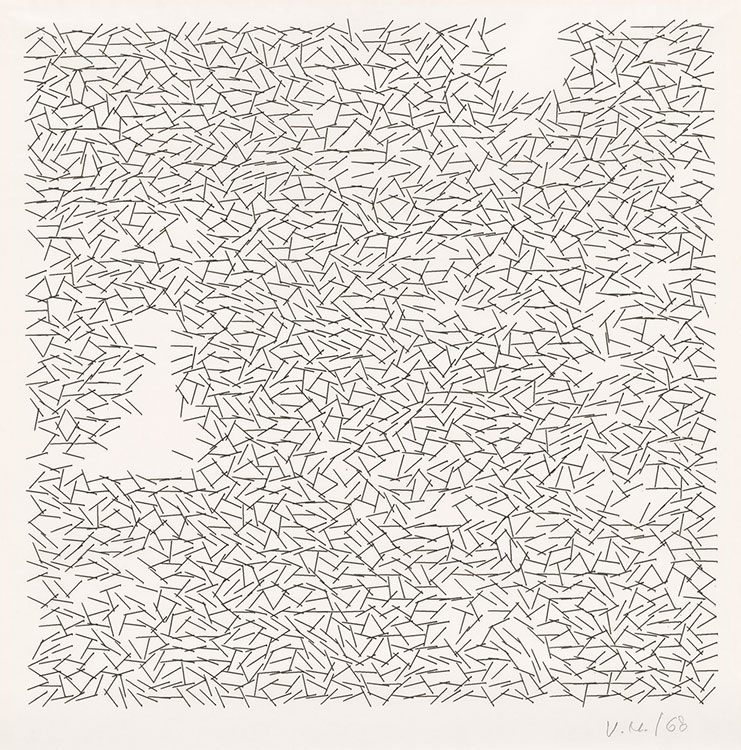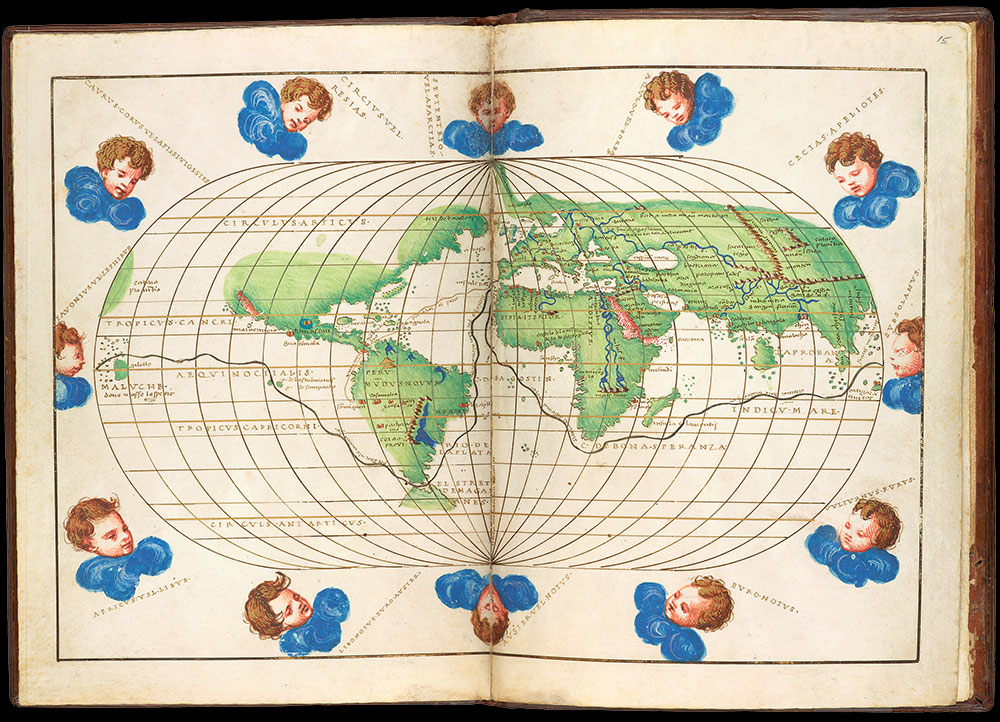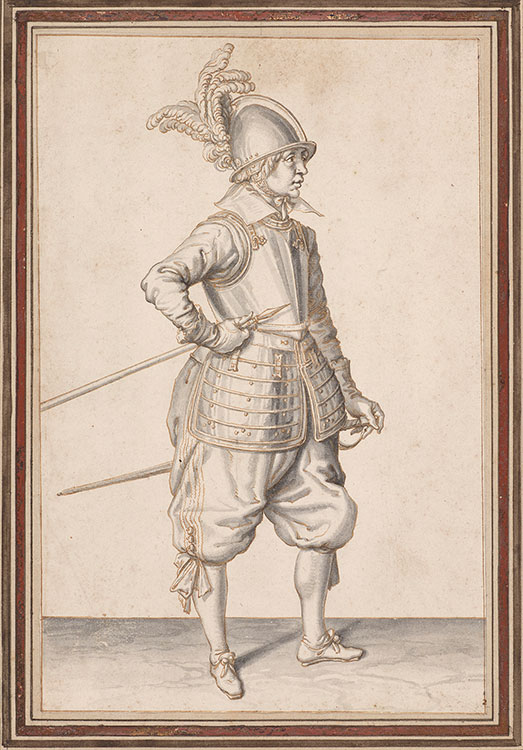Morganmobile: Order and Disorder
The phrase “organized chaos” sums it up: disorder is always the real order of the day. Happily, daily life supports the illusion that some types of order are constant. Night becomes day; familiar stories end as they always have; one generation supplants another. Even if the contest between structure and entropy is a closed case for the physicists, artists are bound to continue—creatively, doggedly, memorably—puzzling over it anew.
Morganmobile: Order and Disorder
Disorderd: The missing e in the title of Robert Duncan’s book evokes the unstable orthography of Renaissance literature, a lifelong interest for the California poet. Duncan was among the coterie of writers and artists in the late 1940s and ‘50s that became known as the San Francisco Renaissance. He characterized his decision to become a poet as proof of a “serious social disorder"—a turning away from the pursuit of conclusions in favor of poems that, for both writer and reader, exist in a state of flux. The self-published Fragments of a Disorderd Devotion even questions the orderly production of books. In an evocation of a doodled-upon notebook, Duncan rendered the title in his own handwriting and made each of the fifty-two copies unique by drawing different designs on the covers.
Robert Duncan (1919–1988), Fragments of a Disorderd Devotion, San Francisco, 1952. The Carter Burden Collection of American Literature. PML 184916.
Morganmobile: Order and Disorder
When George and Ira Gershwin presented their Broadway musical Let ‘Em Eat Cake in 1933, they could not know how real their satirical story of civil disorder would feel to later Americans. After losing re-election, President Wintergreen asks the Supreme Court to overturn the election results. The Court declines, and duly elected president John P. Tweedledee takes office. But Wintergreen and his vice president, Throttlebottom, propagate a revolution in the name of freedom, invoking the American War of Independence. When the military takes their side, Wintergreen returns to office as a dictator. In the end, order of a slightly more democratic kind is restored after a baseball match that pits the Supreme Court against the League of Nations.
George Gershwin (1898–1937), Let ‘Em Eat Cake, “Wintergreen for President,” autograph manuscript,ca.1933. Mary Flagler Cary Music Collection, 1980.
Morganmobile: Order and Disorder
A seventeenth-century Bolognese print maker of considerable fame, Giuseppe Maria Mitelli is best known for his depictions of popular subjects, satires, and caricatures. This chalk study is preparatory for his Proverbi Figurati of 1678, one of the artist's most unusual and interesting suites of engravings. Capturing the proverb "E buon da disfarla, ma non da farla" (it is easier to destroy than to build), this drawing portrays a muscular laborer demolishing a statue of a partially nude female deity.
Giuseppe Maria Mitelli (1634–1718), A Man Destroying a Statue with a Hammer, ca. 1678. Red chalk on paper, 9 7/16 x 7 5/8 inches (240 x 193 mm). Gift of Margot and C. Leonard Gordon in honor of Cara Dufour Denison, 2009.383.
Morganmobile: Order and Disorder
Besides signifying a concept, “order” names a formal category of document. Manuscript collections like the Morgan’s are awash in many kinds of orders, from marching orders to purchase orders. In this majestically rendered document, the teenage King Charles IX instructs two officials to gather up firearms and other weapons and get them off the streets of Paris. In other words, it is an order about public order.
Charles IX, King of France (1550−1574), letter to Claude Marcel and Jehan Le Sueur, Paris, 2 September 1563, countersigned by Claude II de Laubespine. MA 23607. Purchased by Pierpont Morgan before 1913.
Morganmobile: Order and Disorder
Kneeling on the back of a lion, a winged spirit (peri) holds a solar disc aloft. Like the beaming sun, the peri smiles serenely, guiding the lion with a serpent for reins. The lion’s body consists of intertwined humans, animals, and monsters. Far from an inchoate mass, these figures form an interlocking pattern, designed to fit precisely within the contours of the cosmic animal, which symbolizes the constellation Leo.
Sun in Leo; a peri holding an effigy of the sun rides a composite lion, Kashmir, third quarter of the eighteenth century, MS M.787. Purchased from Demotte and Company, New York, through Herbert P. Weissberger, 1935.
Morganmobile: Order and Disorder

Though superficially as orderly as any printed book, sketchbooks often conceal disorder between their covers. This portable sketchbook, with its handy pencil loop tucked in along the upper edge and its elastic band closure, was carried for over a decade by Cézanne around Paris and in Aix-en-Provence. He used the pages freely, with no evident concern for chronological sequence. Close examination by conservators recently revealed that at some point the pages were disbound and rearranged into new groupings. The signatures were then re-sewn and re-cased into the original linen canvas cover, leaving scholars to puzzle out the original order of the volume.
Paul Cézanne (French, 1839–1906), Sketchbook, in use 1875–85. 75 drawings and 1 watercolor on 48 leaves. Thaw Collection, gift in honor of the 75th Anniversary of the Morgan Library and the 50th Anniversary of the Association of Fellows, 1999.9.
Morganmobile: Order and Disorder
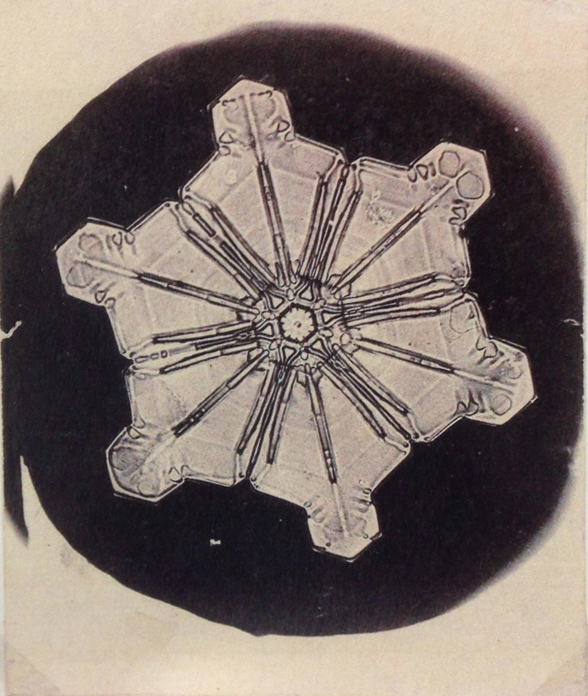
Does an eyeful of snow remind you of the messiness of nature, or of its astonishing order? The modern idea that no two snowflakes are alike—that each frozen crystal is structurally unique—owes much to the career-long photographic hobby of meteorologist Wilson A. Bentley of Jericho, Vermont. In January 1885, Bentley attached a compound microscope to the front of his bellows camera. His portraits of individual crystals (made, of course, under freezing conditions) would come to number in the thousands. Twenty-five hundred exposures appear in the volume Snow Crystals, published in 1931—just a few months before Bentley died of pneumonia after walking six miles home through a blizzard.
Wilson A. Bentley (1865–1931), Snow Crystal, c. 1900. Albumen print, 3 5/8 x 2 15/16 inches (9.21 x 7.46 cm). Gift of Robert Flynn Johnson in memory of Charles Ryskamp, 2014.89.
Morganmobile: Order and Disorder
Interruptions embodies Vera Molnar’s view that a successful abstract composition contains elements of both order and disorder. A pioneer of computer-assisted art, Molnar created this work in 1968, the year she first gained access to an IBM mainframe computer at the University of Paris-Sorbonne. The voids in the drawing are the result of randomness that Molnar built into the program. “This was more complicated, but more interesting, than limiting myself to an ‘all-over’ composition,” she once wrote. She defines an all-over composition as one in which “there are no privileged places on the surface, every place is occupied by a form, a line, a color having the same visual weight.” The holes interrupt the all-over composition, creating what Molnar calls “a disturbed equilibrium.”
Vera Molnar (b. 1924), Interruptions, 1968. Black ink on translucent paper, created on a Benson plotter, 12 5/8 x 12 5/8 inches (32 x 32 cm). Gift of Agnes Gund, 2017.353. © Vera Molnar / Artists Rights Society (ARS), New York
Morganmobile: Order and Disorder
The Trinity rests on the seventh day of Creation. At the bottom left is the Earth before Creation, void and empty, before “the Spirit of God moved over the waters” (Genesis 1:2). At the bottom right is Terrestrial Paradise with its four rivers flowing to the four corners of the earth, each represented by a city. Labels for two countries are legible: Perse and Ethiopia. The enthroned Three Persons of the Trinity are flanked by the nine choirs of angels, arranged in neat, populous rows. All seems in perfect order until we see, at the left, a tenth—empty—row, its gold background unobscured by occupants. This is the row once occupied by the angels who rebelled against God. The rebellious angels can be found below the Trinity, falling head first, nude and mean-faced.
Lothian Bible,in Latin; England, Oxford, ca. 1220; MS M.791, fol. 4v. Given by Philip Hofer, 1935.
Morganmobile: Order and Disorder
Battista Agnese (ca. 1500–1564), was a Genoese cartographer whose prolific workshop in Venice produced dozens of illuminated atlases in an era when European geographic knowledge was rapidly changing. Produced for educated readers—not for the way-finding traveler—Agnese’s atlases helped codify and disseminate a new understanding of the globe. Building on an Ancient Greek understanding of geography, derived ultimately from Ptolemy (ca. 100–170 AD), the world map shown here includes new information on the cartography of North and South America, such as the existence of the Baja California Peninsula. The map also suggests the limits of Agnese’s knowledge at the time: for example, the coast of present-day Chile, on the western side of South America, is essentially left blank.
Battista Agnese, World Map, Venice, 1542; MS M.507, fols. 14v–15r. Purchased by J. Pierpont Morgan, 1912.
Morganmobile: Order and Disorder
Between 1568 and 1648, the United Provinces of the Netherlands waged a protracted struggle for independence against Habsburg Spain. The scope and intensity of the conflict, which coincided with the introduction of firearms in Europe, required imposing order upon often chaotic mercenary forces and transforming them into a professional military service. Johann VII, Count of Nassau-Siegen, developed a series of drills to help train infantry and cavalry in the handling of weapons over the course of the 1590s. These exercises were illustrated by Jacob de Gheyn II, first in drawings like this one, and later in prints that provided inexperienced military men with a comprehensive visual reference manual.
Jacob de Gheyn II (1565–1629), Trayle Your Pike, ca. 1590–1600. Pen and brown ink and wash, brown-ink framing lines, on paper, 10 9/16 x 6 15/16 inches (268 x 177 mm). Promised gift of the Baymeath Art Trust.
Morganmobile: Order and Disorder
A hero, weapon raised at left, comes to the aid of some cattle whose peaceful grazing has been interrupted by attacking lions. The scene has been interpreted as representing one of the great mythic dramas of Sumerian religion: the eternal, cyclical struggle between forces of order and chaos. In the scene, the lions represent the chaos of the natural world while the domesticated animals and man represent the forces of order and the attempt to impose order on the world around them. The violent action is always shown in progress; the battle is never resolved; the struggle is constant.
Ancient cylinder seal with modern impression: Kilted Hero Attacking Felines Menacing Horned Animals; Human-Headed Bull Below Empty Space; Mesopotamia, Early Dynastic III period (ca. 2600–2334 BC). Lapis lazuli, 7/8 x 9/16 in. (2.2 x 1.4 cm). Morgan Seal 85. Acquired by Pierpont Morgan sometime between 1885 and 1908.


